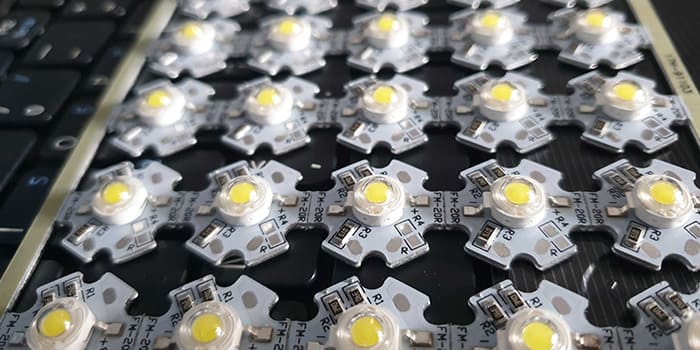Why Do LED Display Beads Turn Black?
LED display beads become black, which results in brightness degradation, display non-uniformity, or a blackout. It is a consequence of the physical or chemical alteration of the material inside or outside the LED after a period of extended use. The four most common causes for this are explained as follows:

1. Material Overheating Aging
A semiconductor chip is embedded in the center of an LED bead that emits heat upon use. This form of heat produces temperature increases with poor heat dissipation, leading to fast material degradation.
· Chip Overheating: Rated temperature (normally ≤85°C) junction temperature above which may cause oxidation of internal epoxy resin and hence yellow at high temperature, subsequently brown or black, resulting in absorption of light output. For instance, a low-cooled high brightness (>1500cd/m²) indoor P2.5 screen (e.g., defective module fans) would cause blackened LEDs after 1–2 years.
· Solder Joint Oxidation: Defective or poor soldering joints between the PCB board and LED offer high contact resistance. It generates "Joule heat" during turn-on, which oxidizes the solder and darkens the region surrounding the LED pins with black burn marks.
2. Power Anomalies and Overcurrent
LED beads are current-sensitive and should be driven within tight tolerances (e.g., 20mA±5%).
· Shorted Driver Circuit: An internally shorted driver IC can deliver unregulated current. With a short on a 100mA channel, the LED will overheat in seconds and break up the chip's PN junction, leaving a "black core".
· High Power Ripple: Low-quality power supplies with ripple more than 5% result in voltage spiking. Long pulses with high repetition rate over an extended period damage the crystal lattice of the LED and cause dark spots on the emitting surface.
3. Environmental Corrosion
Operating conditions in the environment, particularly outdoor or high-humidity environments, will lead to premature blackening of LEDs.
· Moisture and Corrosion: Water vapor penetrates the LED package when at extremely high relative humidity (>80%), and metal pins (i.e., silver) precipitate black silver oxide by oxidizing. When in the presence of a sulfur compound atmosphere (e.g., kitchen air or factory smoke), black silver sulfide is precipitated.
· Grease and Dust: Grease and dust settle on mall or restaurant LED signs. At high temperatures, they blacken and discolour, stick and block heat flow — a vicious cycle that repeats itself.
4. Manufacturing Defects and Material Quality
Pre-mature blackening may result from manufacturing or material defects.
· Poor-Quality Packaging: Recycling epoxy or poorer-quality phosphor silicone LEDs dematerialize at very high rates when exposed to ultraviolet light and darken with time. Companies cut costs with unpurified phosphor powder that chemically degrades when heated to high temperatures to create black deposits.
· Factory Defects: Ductility or unusually high curing temperatures at packaging enable air bubbles to be created. The air bubbles oxidize when heated and turn into black spots.
Blackened LEDs are usually an avoidable problem. To reduce risk: use overheat-protected drivers, wipe the LED surface occasionally, and use dehumidification when working in wet situations. If blackening does take place, replace the offending beads promptly and check the driver and cooling systems. Using high-quality LEDs (e.g., Epistar or San'an) and adhering to proper use procedures will keep blackening from occurring in a big way and prolong the life of your display.
- Previous Article:What Are The Common Maintenance Methods and Precautions for LED Display Screens?
- Next Article:No content for the time being



